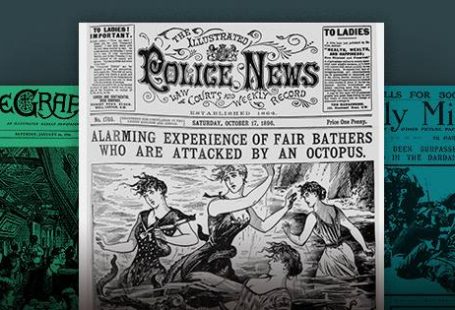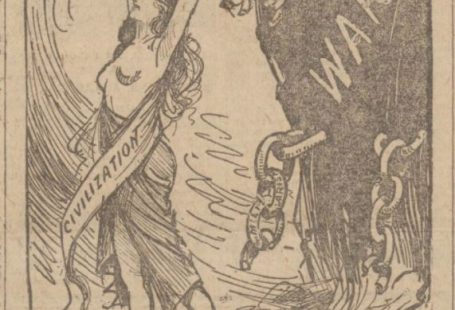Discover more about specific occupations, industries and the history of working conditions and employment regulations in our historic newspapers. In towns and villages across Britain and Ireland people plied their trades, from carters and hawkers, to seamstresses and tailors. As the centuries passed agriculture gave way to industry and the ‘factory-worker’ was born. Read our blog to discover more about the history of work & occupations.
Of Cordwainers, Chandlers & Night-Soil Men
There are some historic occupations that are no longer with us, others have changed name over the years. Cordwainers for example made leather goods, including shoes, there was a distinction between them and cobblers, who repaired shoes. Chandlers made candles. Costermongers sold goods from carts, moving from street to street. In an age before modern conveniences, machinery, to say nothing of computerised robots, every job had to be undertaken by someone. Men and horses moved materials, children sold oranges on street corners, and women made beer and did laundry. These are just examples of course, there were hundreds of occupations.
Perhaps one of the least savoury jobs in early towns and cities was that of ‘night-soil man’. This as you might have been able to guess involved disposing of human-waste that was deposited in pits and buckets at the back of houses. The gentleman would, under cover of darkness, remove the offending material.
Search Tip: If searching for a person include their occupation to narrow your results
Apprentices & Guilds
Many occupations were controlled by masters and guilds. Guilds were medieval in origin and members paid fees to join a guild, or to be trained in a particular trade by a master. Guilds became very powerful and controlled the trade in particular goods, such as spices and gold-smithing.
Places wanted for three healthy girls, as apprentices… one about 11, one 14 and the other 16 years of age…

Apprenticeships to masters could start as young as age 7. Children were sent from their families to live with their masters. As the advertisement shown here, orphaned or abandoned children could also be sent on apprenticeships by their parish. One of the most frequent mentions of apprentices in the newspapers was when they absconded (ran away). Absconding from a master was taken very seriously and children could be imprisoned.
A Life spent Labouring

The vast majority of the population throughout the eighteenth, nineteenth and early twentieth centuries were described as ‘labourers’. This rather anonymous term lumps together a huge variety of jobs that were considered ‘unskilled’. These jobs did not require the specialist training undertaken by apprentices. A labourer’s lot could be an uncertain one, work was not guaranteed and in extreme cases they would have to seek work every day, turning up to the local quarry or dockyard, for example, to ask for work. In rural areas work was seasonal, tied to planting and harvesting, and some labourers travelled following the work. To discover how labourers in your family or locality were employed look in the newspapers to discover what industries were operating in the area.
Average wages in Foreign Countries, per day, to a Mechanic, 1s 7½d; to a Manufacturing Operative, 1s. 1¼d.; to an Agricultural Labourer, 7½d. Wages per day, paid to a Mechanic, in Great Britain, 3s. 8d.; to Manufacturing Operative, 1s. 1¼d.; to Agricultural Labourer, 1s. 10d.
You can also discover typical rates of pay from looking at local advertisements. The image above from the Londonderry Standard in 1841 shows typical wages in European countries for agricultural labourers and ‘mechanics’ meaning those occupied using machinery. To discover how much their wages were worth you should look to the price of bread at the time. Bread was considered an essential, staple food and therefore its price in relation to wages was considered a gauge of the real value of wages.
Workers Cottages & Factory Towns

From the medieval period onward the large agricultural estates owned by the landed gentry and aristocracy often had estate villages where those who worked on the estate lived. Arrangements differed but usually a portion of the workers’ wages went to pay for their accommodation on the estate. During the industrial revolution this model was adopted and adapted by the owners of factories and mines. These ‘model villages’ were praised by the press. But these highly controlled villages often banned alcohol and practiced a form of social control over the inhabitants. (click on the image to read of the virtues of having no ‘ale-house’)
The schools, cottages, and mills, are described as being all in admirable condition. The homes of the work-people are clean, well-furnished, well-regulated; the schools “filled with rosy-cheeked,bright-eyed, intelligent children, of from six to twelve years old.” Not one of the older boys but can read, write, and cipher, and bas very creditable acquaintance with history, geography, and physical science—not one of the older boys but can read, write, knit, and sew well enough for all ordinary purposes.
Working Conditions

The nature of work has changed greatly over the last three centuries. From economies dominated by agriculture to a shift towards manufacturing and finally the service industries (tourism and office work). For much of history only Sunday was a day of rest, and for those in domestic service days off were a rarity.
One of the most fundamental changes to working patterns was the introduction of half-day Saturdays and eventually the 5 day week. The half-day Saturday, first introduced in 1850 was even more valuable when you consider that in many factories the working day was 12 hours long! Not all business adopted the half-day. We blogged about the struggle to introduce the half-holiday when it was discovered in an episode of Who Do You Think You Are? that Ian McKellen’s ancestor, Robert Lowes, had lobbied for its introduction.
Employees of one establishment were so proud of the fact that they had a half-day, and paid holidays (a real rarity) by 1856 that they took a notice in the Belfast Mercury to praise their employer.
In the year 1856, we were the only workers in the Trade then enjoying the Saturday half-holiday. Last year we commenced a month earlier than any other Establishment… Besides the above, we have, for the last six or seven years, enjoyed a fortnight in the Summer for recreation, with wages in hand – at treat as yet unknown to any other Provision Concern in town.

Another feature of working life which has largely disappeared from modern British & Irish society was the employing of children. With their small frames and hands they were employed in trades such as pin-making. Before the opening of factories the labour of children was somewhat hidden, trades like pin making were undertaken at home. With the opening of factories child-labour became a topic more frequently debated in the press. The physical exertions of the children, and their lack of education were of great concern to commentators.
The children called piercers, in their daily movements within the mill, amounted to 20, and in some factories 30 miles a-day ; “An average of fatigue,” says Mr. Guthrie, the military surgeon, “which is not endured a soldier in the presence of an enemy.” … …. Then, as to their minds, although it was true that the existing bill had enactments for their education in Sunday schools, yet so utterly were they exhausted, and so extensively depraved, the life they led throughout the rest of the week, as be wholly incapable of receiving the instruction provided for them on the Sunday.
Discover more about the history of occupations for yourself in our historic newspapers







1 comments On Employment and Occupation History in the Newspapers
Thanks for this very interesting post. I’d like to understand a bit more about how I can look up advertisements to find wage data. I’m mostly looking for tailors in the 19th century. Would it be possible to discuss this over email or on the phone?
Best wishes, Hillary